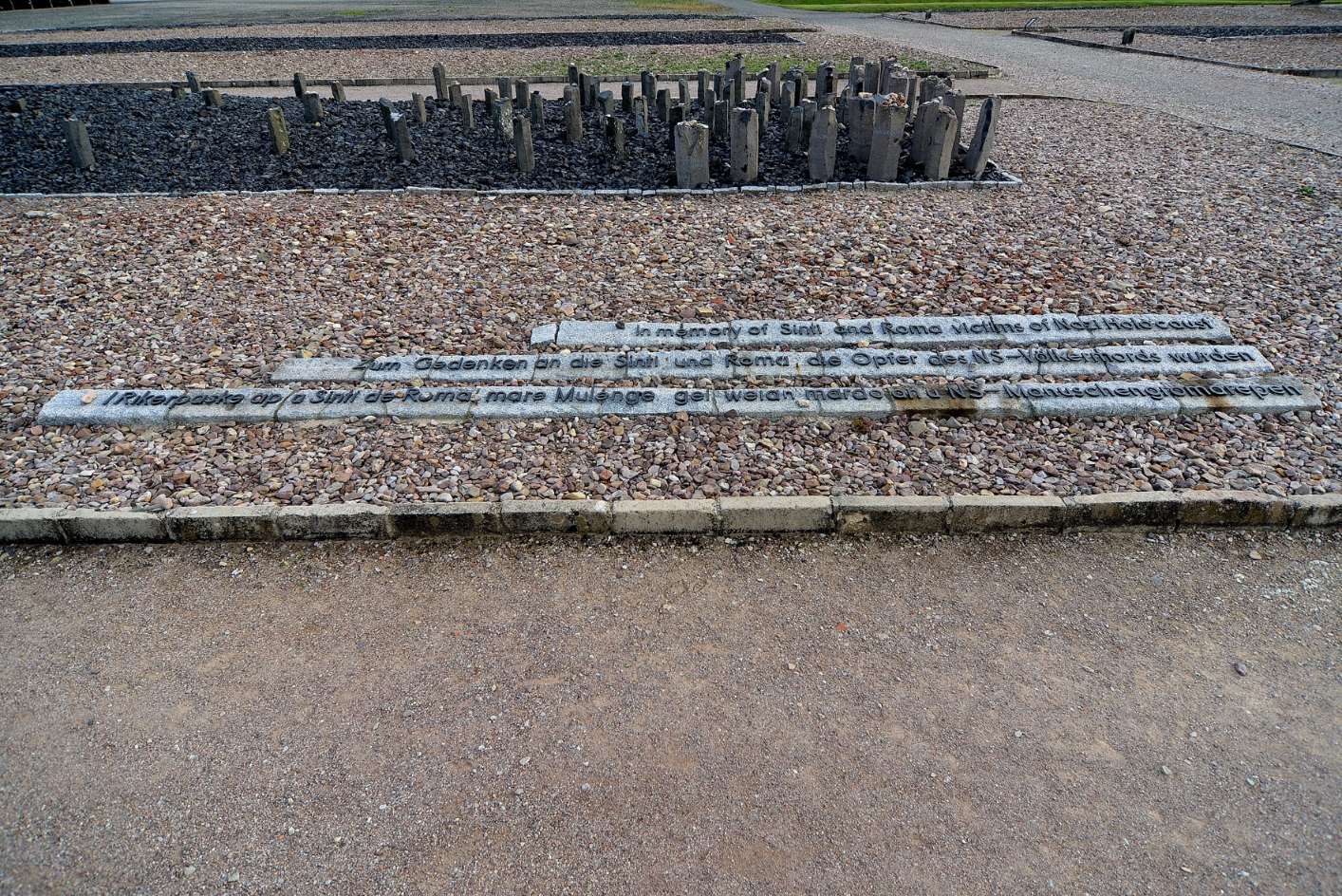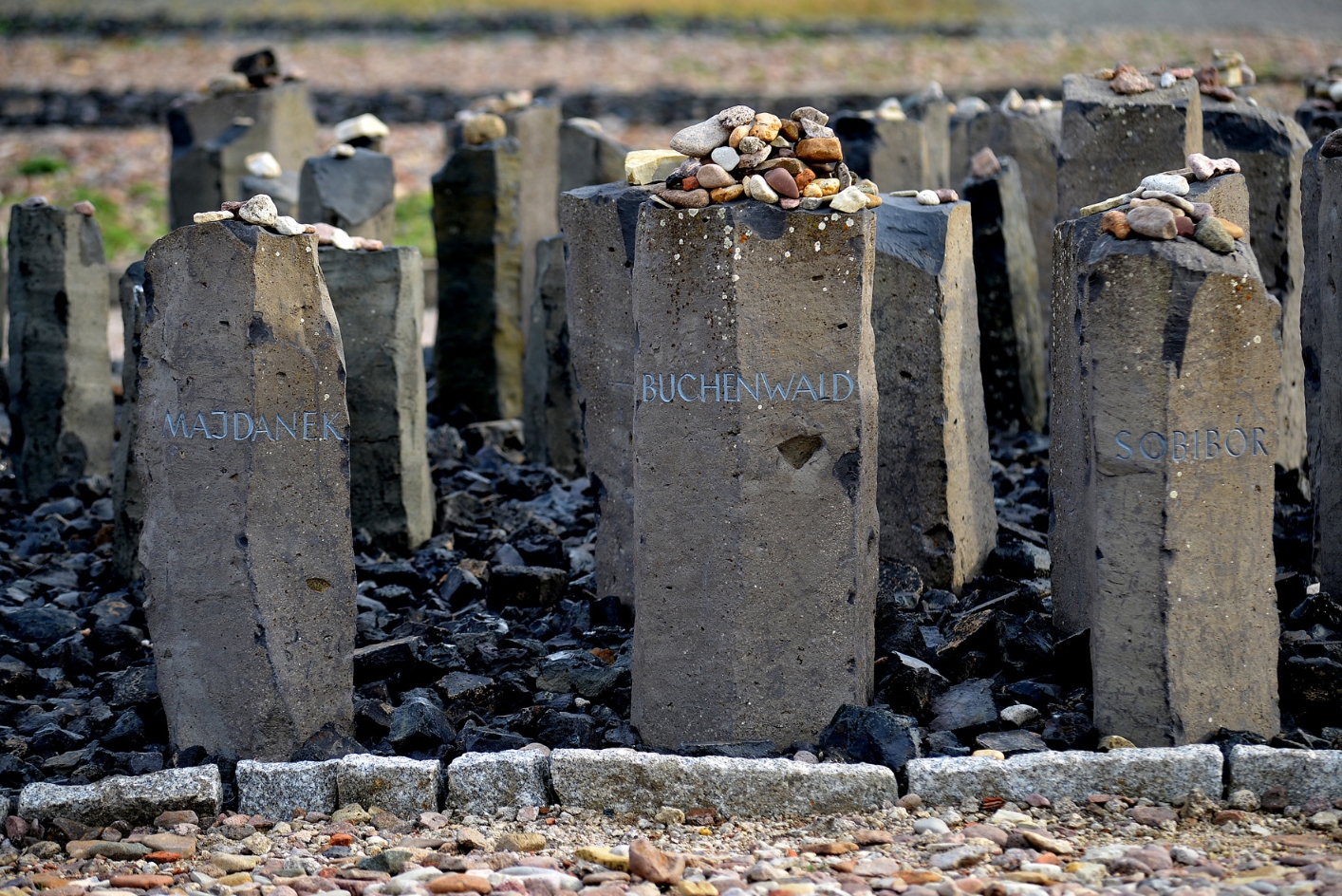

Individual Sinta and Roma were sent to Buchenwald as early as 1937. Hundreds of random arrests followed in 1938. From this point on, Sinti and Roma were the targets of a racist terror campaign and persecuted as "gypsies". At Buchenwald the SS allowed them to become the objects of racist research, for example by the "gypsy researcher" Robert Ritter.
Over the course of the eight years of Buchenwald's operation, some 3,500 Sinti and Roma (men and women) were held at the concentration camp and its subcamps. At least 400 of them were murdered there. Others were deported by the SS to the Mauthausen Concentration Camp, where they were devasted by forced labour in the quarries. In September 1944, the SS sent 200 Sinti and Roma youths back to Auschwitz and murdered them in the gas chambers.
Designed by Daniel Plaas, the monument consists of 100 black basalt steles next to a small mound of black gravel. It is the first memorial to the murdered Sinti and Roma at a German commemorative site. On 18 steles are the names of other concentration and extermination camps, where Sinti and Roma died. The inscription in English, German, and Romanes reads: "In memory of the Sinti and Roma victims of the Nazi Holocaust."

